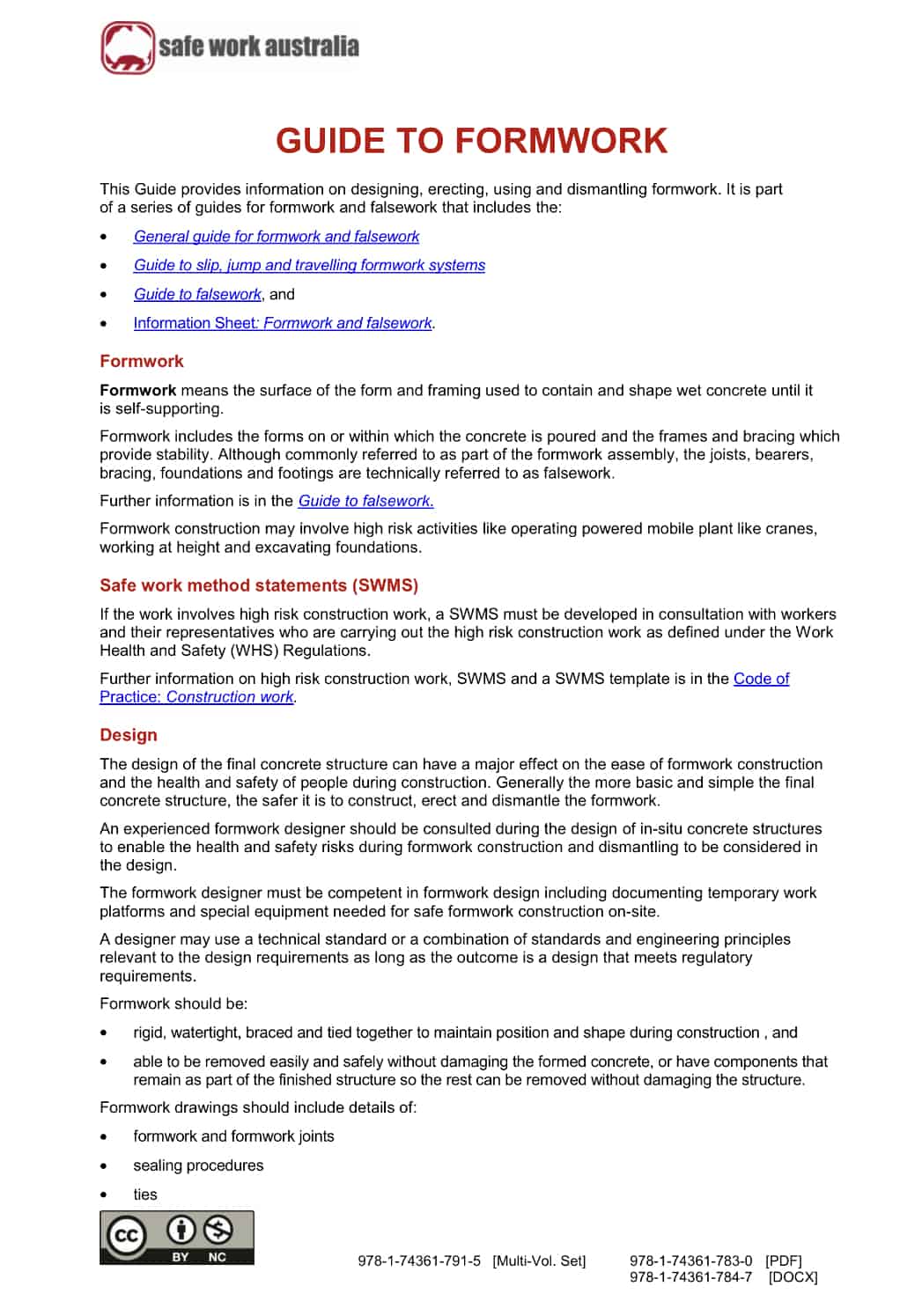Guide To Formwork
This Guide provides information on designing, erecting, using and dismantling formwork.
LOVE THIS ITEM?
Download For Free
Subscribe to download this item for free! You'll unlock unlimited access to thousands of construction documents, templates and tutorials.
Start Your 14-Day Free TrialProduct FAQ
You will receive your documents and files immediately after you complete the checkout process. You will receive a link on the checkout page as well as via email.
As long as the document remains on Essential Construction you will be able to download it once purchased.
Yes, in most cases (with the exception of stock photography and ebooks) the files you will receive are editable.
We accept debit, all credit cards (Visa, Amex Mastercard etc) as well as payments via Apple Pay, Google Pay and Paypal.
Our return policy varies based on the product, for more information you can find our detailed return policy here.
Our documents are for use on your projects. You may not resell these documents on other marketplaces.
Full Description
This Guide provides information on designing, erecting, using and dismantling formwork. It is part of a series of guides for formwork and falsework that includes the:
- General guide for formwork and falsework
- Guide to slip, jump and travelling formwork systems
- Guide to falsework, and
- Information Sheet: Formwork and falsework.
Formwork
Formwork means the surface of the form and framing used to contain and shape wet concrete until it is self-supporting.
Formwork includes the forms on or within which the concrete is poured and the frames and bracing which provide stability. Although commonly referred to as part of the formwork assembly, the joists, bearers, bracing, foundations and footings are technically referred to as falsework.
Further information is in the Guide to falsework.
Formwork construction may involve high risk activities like operating powered mobile plant like cranes, working at height and excavating foundations.
Safe work method statements (SWMS)
If the work involves high risk construction work, a SWMS must be developed in consultation with workers and their representatives who are carrying out the high risk construction work as defined under the Work Health and Safety (WHS) Regulations.
Further information on high risk construction work, SWMS and a SWMS template is in the Code of Practice: Construction work.
Design
The design of the final concrete structure can have a major effect on the ease of formwork construction and the health and safety of people during construction. Generally the more basic and simple the final concrete structure, the safer it is to construct, erect and dismantle the formwork.
An experienced formwork designer should be consulted during the design of in-situ concrete structures to enable the health and safety risks during formwork construction and dismantling to be considered in the design.
The formwork designer must be competent in formwork design including documenting temporary work platforms and special equipment needed for safe formwork construction on-site.
A designer may use a technical standard or a combination of standards and engineering principles relevant to the design requirements as long as the outcome is a design that meets regulatory requirements.
Formwork should be:
- rigid, watertight, braced and tied together to maintain position and shape during construction , and
- able to be removed easily and safely without damaging the formed concrete, or have components that remain as part of the finished structure so the rest can be removed without damaging the structure.
Formwork drawings should include details of:
- formwork and formwork joints
- sealing procedures
- ties
- size and spacing of framing
- details of proprietary fittings or systems proposed to be used, and
- bond breakers, if used.
The formwork designer should determine the vertical pour rates for walls, columns and other vertical concrete elements before completing the formwork design.
Details of the construction method and erection sequence should be included on the formwork drawings where appropriate. Where special methods like external vibration are involved the formwork design should allow for any resulting additional structural loads.
Where formwork is to be re-used, the formwork design should ensure form strength is retained after allowing for the deterioration of materials through use, handling and storage.
All formwork drawings should be certified as complying with applicable Australian Standards. Components from different formwork systems should not be mixed unless a competent person, for example an engineer, has authorised the component use. Variations to a design of a system should be checked and verified in writing by a designer, engineer or other competent person.
This site uses Akismet to reduce spam. Learn how your comment data is processed.











Reviews
There are no reviews yet